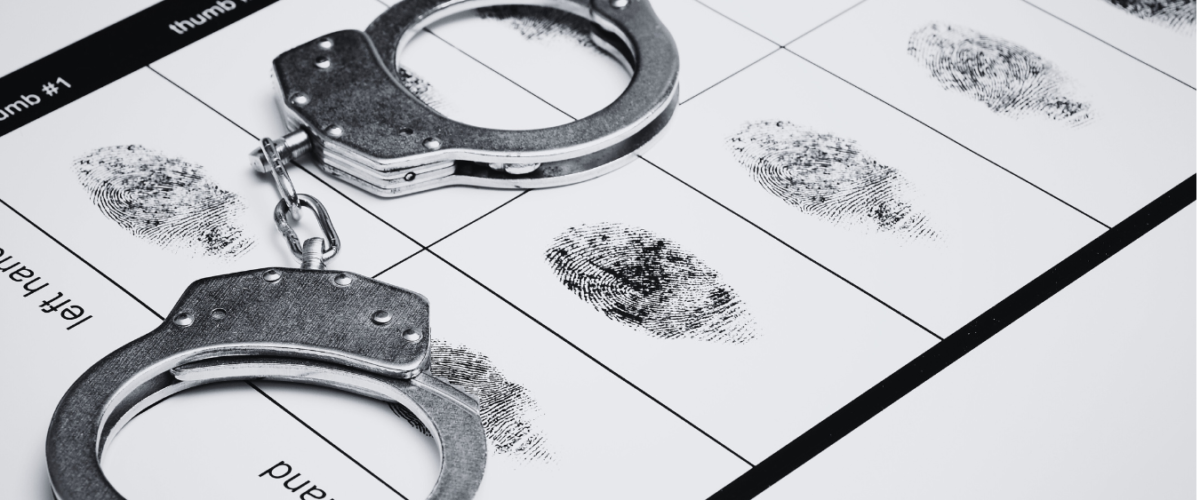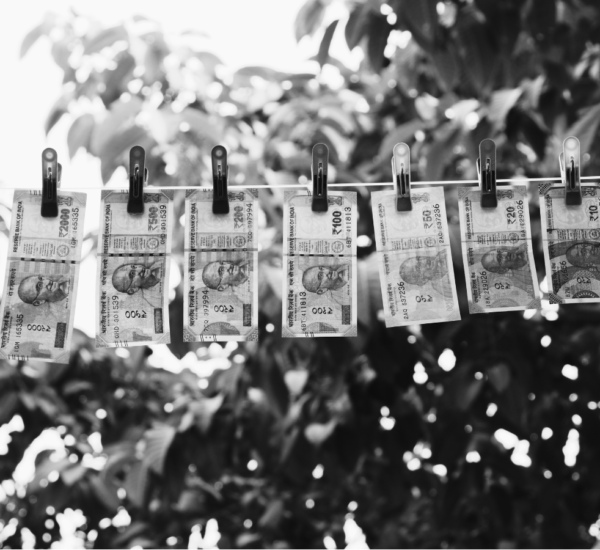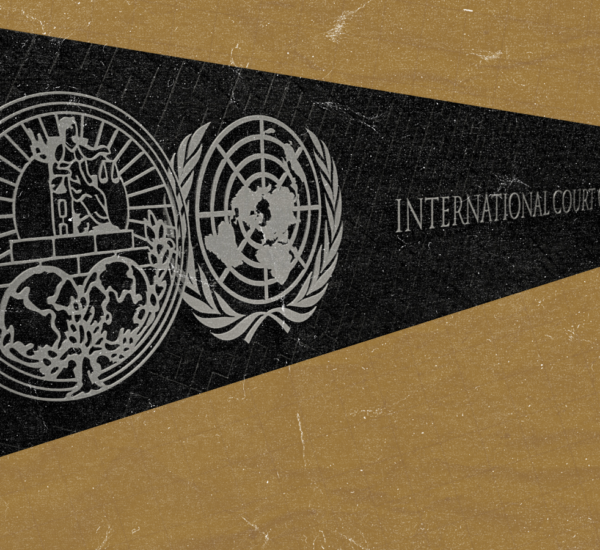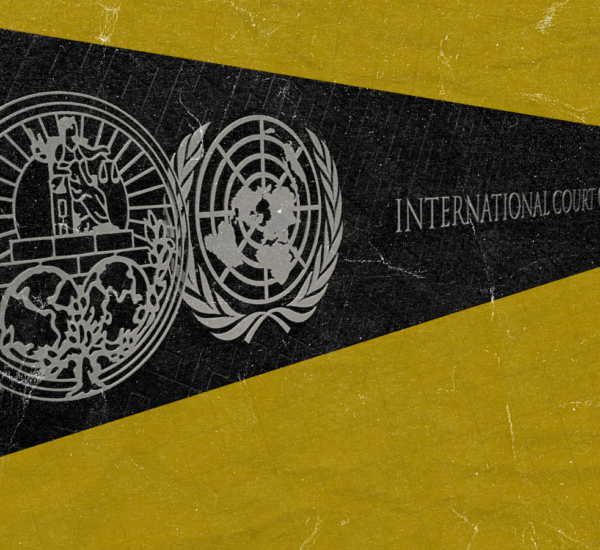This series analyses the changes proposed by the Criminal Law Bills in 2023. This article was first published as part of Project 39A’s Bharatiya Nagarik Suraksha Sanhita Bill, 2023 and Bharatiya Sakshya Bill, 2023: A Substantive Analysis, a complete version of which can be accessed here.
This post analyses the changes proposed to the collection of forensic evidence and the scope of examining forensic science experts under the Bharatiya Nagarik Suraksha Sanhita Bill, 2023.
The use of technology and forensic sciences in the criminal justice system is a stated aim of the BNSS.[1] This part discusses the main provisions that deal with the use of forensic evidence i.e. Cls.176(3), 349, 329 and 330.
Cl.176(3) introduces a new requirement to the procedure for investigation prescribed under s.157 CrPC i.e. collection of forensic evidence from crime scenes by a forensic expert. Cl.349 expands the types of forensic samples that may be collected from any person upon a Magisterial order under s.311A CrPC. Corresponding to s.293 CrPC, Cl.329 BNSS retains the exemption for certain government scientific experts from appearing as witnesses before the court. Cl.330(1) adds a new proviso to s.294 CrPC regarding when formal proof of documents is not required. This proviso disallows calling any experts to appear before the court, unless the genuineness of their report is disputed by the parties. It is evident from these changes that the BNSS seeks to expand and enhance the State’s power to collect forensic evidence, both from crime scenes and individuals, while simultaneously reducing the scope of examination of forensic experts.
I. Enhanced Evidence Collection from Crime Scenes
Cl.176(3) introduces a mandate for the collection of forensic evidence at the crime scene by a ‘forensics expert’ in all offences punishable by imprisonment of seven years or more. The clause prescribes a five-year period regarding the implementation of the provision. However it is unclear whether the time limit has been prescribed for states to notify the date of implementation (which may be beyond the five-year period), or for the implementation of the provision itself.
Considering the lack of statutory requirements on crime scene management, the introduction of this clause is a significant step towards ensuring proper collection of forensic evidence from crime scenes in serious cases. Currently, the practices for evidence collection vary across states. In many states, scientific staff from forensic science laboratories (FSLs)[2] or District/Mobile Forensic Science Units (DFSU/MFSU)[3] may also be called for crime scene visits by police officials depending on the nature of the case.[4] Additionally, in states such as Karnataka, the state police have created posts to hire civilian forensic experts as Scene of Crime Officers (SoCOs) to assist with crime scene management.[5] Thus, while mandating evidence collection by an expert is a positive change, implementation of the measure may prove challenging in the current forensic science system.
a. Broad Scope of ‘Forensics Experts’ could include Private Experts
Under Cl.176(3), the term ‘forensics expert’ could include both government (FSL officers or SoCOs working with the police), as well as private forensic experts. Currently, the CrPC permits reliance on registered medical practitioners who are privately employed, to conduct medical examinations.[6] Medical professionals are regulated by the National Medical Commission through a system of registration and licensing, along with standards monitoring their professional conduct. On the other hand, there are presently no oversight mechanisms or standards to regulate the system of forensic science education or profession in India.[7] In this context, allowing private forensic experts to assist with crime scene examination, without any regulatory body to ensure their proficiency or compliance with professional and ethical standards, would be problematic and should be reconsidered.
b. Potential issues with involving FSL Experts for Crime Scene Visits
Forensic scientists currently working in FSLs would be covered within the term ‘forensic experts’ under this provision for crime scene examination. The same experts may proceed to examine the evidence collected from the crime scene within the FSL as well. This poses a serious risk for issues of cognitive and contextual bias, as the forensic examiner would be exposed to a wide range of task-irrelevant information during the crime scene inspection.[8] In case accused persons or witnesses are present during the crime scene examination, the forensic expert may be exposed to confession by the accused, witness statements, or other information which may be irrelevant for their forensic examination, such as the gruesome nature of the crime scene. Further, visiting crime scenes in addition to grappling with a heavy caseload, with vacancies in their divisions, is often demanding for forensic examiners.[9] The necessary infrastructure for crime scene visits and evidence collection, in the form of mobile vans equipped with the requisite instruments and material, would also require significant investment across sta
II. Wider Evidence Collection from Individuals
The power of Magistrates to order collection of forensic samples from individuals under s.311A CrPC has been expanded by Cl.349 in two significant ways. Firstly, the types of samples that may be collected have been expanded from signatures and handwriting to include fingerprints and voice samples[10] as well. Secondly, in addition to ordering collection of samples from persons who may have been previously arrested in connection with the investigation as provided in s.311A, under Cl.349 the Magistrate can order collection of samples from any person while providing the reasons for such collection in writing.[11]
a. Expanding the scope of collection of Personal Data
Concerns regarding the expansive powers of collection of personal data under the CPIA hold true for Cl.349 as well.[12] Under Cl.349, fingerprint and voice analysis samples can be collected from any person with reasons to be recorded in writing. There is no requirement for establishing either the person’s connection with the offence or the relevance of their samples to the criminal investigation. Given that the samples sought to be collected constitute an individual’s personal data, this raises serious concerns regarding the disproportionate impact on the right to privacy. This gains particular significance in light of questions regarding the validity and reliability of these forensic techniques and the existing practices in forensic science laboratories in India.
- Fingerprint Examination
Studies on the accuracy of fingerprint analysis have found different false positive rates (1 in 306 in a 2011 study and 1 in 18 in a 2014 study).[13] In case of two fingerprints from different sources that have many common features and few dissimilarities (close non-matches), the error rate is as high as 28.1%.[14] This raises critical questions regarding the perceived accuracy and infallibility of fingerprint comparison that currently exists within the criminal justice system. Besides the high rates of error in fingerprint examination which impact its reliability, there is also a lack of empirical evidence of the ‘uniqueness’ of fingerprints.[15] Further, many studies have found that fingerprint examiners are susceptible to issues of confirmation (where examiners are prone alter the features they mark in an unknown fingerprint based on the features seen in the known fingerprint) and contextual bias (where the examiners’ decision-making is influenced by task-irrelevant information), which raises concern about the reliability of fingerprint examination.[16]
- Voice Analysis
Characteristics which impact voice comparison, such as the relevant linguistic population, conditions in which the voice recording was made, and storage and transmission conditions of the voice clip, vary greatly.[17] The characteristics of a single individual’s voice in saying the same thing also varies from one instance to another, depending on the language, accent, dialect, speaking style, and their emotional and physical condition.[18] Voice analysis can be done through various kinds of methods, and while jurisdictions move from highly subjective methods to more objective ones based on automated software,[19] empirical research to validate and measure the accuracy of different forensic voice comparison systems is ongoing.[20] Until the scientific foundations of voice analysis have been tested, legal reliance on such evidence has been cautioned against.[21]
- Lack of Validation of Procedures in Indian FSLs
Besides issues with the validity and reliability of fingerprint and voice analysis methods, there is also an issue of quality management within Indian forensic practice, to ensure that the forensic methods have been correctly applied in an individual case. Besides the absence of best practices or guidelines for laboratories to undertake such examinations,[22] FSLs widely lack their own working procedure manuals (WPMs). WPMs provide stepwise instructions on all aspects of the forensic examination. Such manuals should be prepared after internal validation studies to ensure that these procedures perform as expected within the laboratory’s set-up and provide accurate results.[23] Thus, the move to collect more personal data from a wider group of people, without proper procedures within FSLs to ensure reliable analysis, needs further consideration.
III. Exemption to Forensic Experts from Judicial Scrutiny
Corresponding to s.293 CrPC, Cl.329 allows the submission of a report by a government scientific experts as evidence, without requiring their oral testimony in court as a witness. Cl.329 expands the categories of experts exempted from court deposition: any scientific expert certified by the central or state governments (which can include private experts) may be notified under the clause.
a. Background
S.293 CrPC draws from s.510 under the 1882 and 1898 CrPC, which stipulated that reports of Chemical Examiners could be used as evidence in court. While under the current CrPC 1973, s.293 grants courts the discretion to summon the exempted experts as witnesses, it allows the experts to depute a fellow expert to depose to the contents of the report on their behalf.
Cl.329 widens the exemption from oral examination for forensic experts.[24] This exemption to experts from fulfilling their duty to the court is in stark contrast to the law in other jurisdictions,[25] including the United Kingdom, where courts must provide reasons for not examining an expert whose report has been admitted as evidence.[26]
b. Conflict with s.45 of the Indian Evidence Act, 1872 and issues of Fair Trial
S.45 IEA permits reliance on opinions of experts on a diverse range of areas, including on matters of science. Courts have held that despite the specialised nature of expert evidence, the accuracy and reliability of the expert’s findings should be independently reviewed, based on the data and materials underlying the examination.[27] In Rahul v. State (NCT of Delhi),[28] the Supreme Court disregarded the DNA evidence on the basis that the lower courts had failed to examine the underlying basis of the DNA report and whether the expert had reliably conducted the examination.
However, Cl.329 impedes any meaningful judicial scrutiny of forensic evidence. Although sub-clause (2) formally allows judicial discretion to summon and examine experts, in practice this depends upon an application by the defence explaining why the particular expert ought to be summoned.[29] This inhibits meaningful examination of forensic evidence and makes it dependent on the quality of legal representation. Without oral examination of experts, courts cannot properly examine issues regarding the admissibility and weight of the forensic evidence. This includes the foundational validity of the techniques used, qualifications and necessary experience of the expert in that type of examination, and whether they reliably performed it in that particular case. Given the crucial role that forensic evidence plays in criminal justice administration, lack of adequate scrutiny of forensic reports would adversely affect the right to fair trial of both victims and accused, alike.[30]
c. Issues of arbitrariness while exempting specific Government Scientific Experts from Oral Deposition
Like s.293 CrPC, the exemption from deposing before courts is applicable to specific government scientific experts mentioned in Cl.329(4). This creates an artificial distinction between forensic examiners practising the same forensic discipline, with those holding specific designations being exempted from testifying before the court. Such an exemption lacks a determining principle and appears to be manifestly arbitrary.[31] Further, the exempted category of government scientific experts as notified by the state governments, may vary across states. Cl.329(2) also does not provide any parameters to guide the court’s discretion on when they may summon experts as witnesses which can lead to arbitrariness.
IV. Curtailing Judicial Scrutiny of Forensic Evidence
The impediment to challenging forensic reports in Cl.329 is further strengthened by Cl.330. It corresponds to s.294 CrPC, which omits the requirement of formal proof for documents whose genuineness are not challenged by the opposing party.[32] Cl.330(1) requires parties to admit or deny the genuineness of documents within thirty days of their being supplied, a time limit that can be relaxed by the Magistrate upon giving reasons. Importantly, a new proviso to Cl.330(1) stipulates that an expert cannot be called to appear before the court unless their report is disputed by a party. Unlike Cl.329, this proviso is applicable to all experts.
a. Background
Like s.294 CrPC, Cl.330 applies to the pre-trial stage of criminal proceedings where parties are given the opportunity to challenge the genuineness of documents to be relied on by the other party i.e. whether the documents are true, devoid of any forgery or fabrication. While discussing s.294 CrPC, courts have differed on the issue of whether expert reports, like medical or post mortem reports can be admitted as evidence without the testimony of the experts who prepared such reports, in case the genuineness of such reports has not been challenged.
Some courts have held that this provision would only apply to certain documents, like letters, which speak for themselves once they are formally proved.[33] However a medical or post mortem report can only be used to corroborate or contradict the doctor and cannot be a substitute for their oral testimony.[34] A similar view has been that even if the genuineness of a post mortem report is not disputed under s.294 CrPC, the requirements under s.45 IEA regarding expert evidence would continue to apply, which necessitates the examination of the expert. Without the expert’s testimony, their report would be a mere certificate, which cannot be considered as evidence.[35] On the other hand, courts have also held that a medical or post mortem report may be considered as a document s.294 CrPC. Therefore, if the accused or his counsel has admitted the genuineness of such reports, they would be admissible as evidence without requiring the oral testimony of the experts as witness.[36] The proviso to Cl.330(1) seeks to clarify this divergence in judicial opinions by adopting the latter interpretation.
b. Examination of Experts arbitrarily restricted to issues regarding Genuineness
The proviso to Cl.330(1) restricts the examination of experts during trial only if the genuineness of their reports have been challenged during this pre-trial stage. This restriction is unreasonable and arbitrary as it presumes that the deposition of experts as witnesses would be necessary only for the purposes of establishing the genuineness of their report. Therefore, it precludes the examination of experts on crucial aspects which determine the accuracy and reliability of their opinions, such as the scientific validity of the testing methods, their qualifications and experience in performing such forensic examinations, and whether they reliably followed the techniques.[37]
c. Limiting Inquiry into reliability of Expert Reports and issues regarding Fair Trial
The proviso to Cl.330(1) limits the parties to the trial (both accused and victims) from examining experts only to matters regarding the genuineness of the report. It is also important to note that FSL reports are often submitted by the prosecution during the course of the trial or after the recording of the prosecution evidence or the statement of the accused under s.313 CrPC.[38] In such a scenario, the accused does not receive an opportunity to object to the genuineness of the report under s.294 CrPC.
Further, under this proviso, as experts would be called as witnesses during trial only if opposing parties dispute the authenticity of their report, it may prevent courts from conducting an independent review of the accuracy and reliability of the expert’s opinion. Therefore, such a restriction would adversely impact the right to fair trial for the accused and the victims.
[1] Statement of Objects and Reasons, BNSS.
[2] Directorate of Forensic Science Services, Ministry of Home Affairs, ‘DFSS Report 2018-2022’, Page 16: There are 145 FSLs in India, comprising 7 Central, 32 State and 106 regional laboratories.
[3] Directorate of Forensic Science Services, Ministry of Home Affairs, ‘DFSS Report 2018-2022’: there are 552 mobile forensic science units in India.
[4] Project 39A, ‘Forensic Science India Report: A Study of Forensic Science Laboratories (2013-2017)’, Chapter 3: Case Management, Pages 152-153.
[5] The Hindu, ‘In a first, Karnataka to have ‘scene of crime officers’’, (The Hindu, 13 July 2021).
[6] Ss.53, 53A, 54 and 164A CrPC: references to registered medical practitioners. While s.53 may include any registered medical practitioner (whether employed within a state hospital or institution or not), ss.53A, 54 and 164A CrPC state a preference for government medical practitioners, and in case they are unavailable, then any other registered medical practitioner.
[7] Project 39A, ‘Forensic Science India Report: A Study of Forensic Science Laboratories (2013-2017)’, Chapter 2: Recruitment, Education & Training, Page 112.
[8] Itiel Dror,Cognitive and Human Factors in Expert Decision Making: Six Fallacies and the Eight Sources of Bias, Analytical Chemistry, Volume 92, Issue 12, June 2020, Pages 7998-8004: describes eight sources of bias in scientific experts including contextual bias, discussing how contextual information about the case creates expectations that influence calls made during scientific analysis and interpretation of results; Itiel Dror, Justice Bridget M McCormack & Jules Epstein, Cognitive Bias and Its Impact on Expert Witnesses and the Court, The Judges Journal, Volume 54, Issue 4, (2015), Page 8.
[9] Project 39A, ‘Forensic Science India Report: A Study of Forensic Science Laboratories (2013-2017)’, Chapter 3: Case Management, ‘Challenges in crime scene & court visits’, Page 152: Between 2013-2018, 40.3% of the total sanctioned posts were vacant, out of which 69.6% of the posts were for scientific staff; Project 39A, ‘Forensic Science India Report: A Study of Forensic Science Laboratories (2013-2017)’, Chapter 2: Recruitment, Education & Training, Pages 95-104.
[10] Ritesh Sinha v. State of Uttar Pradesh (2019) 8 SCC 1: The Supreme Court held that collection of voice samples from an accused vide Magisterial order under s.91 CrPC does not amount to a violation of their right against self-incrimination under Art.21.
[11] There is an overlap between Cl.349 BNSS and the provisions under the CPIA, which replaced the Identification of Prisoners Act, 1920. CPIA permits the collection of a wide range of personal data or ‘measurements’ from convicted persons, arrestees, and persons under preventative detention. The Magistrate may also direct any person to give their measurements, if it is considered ‘expedient’ for the investigation.
[12] Project 39A, Research Brief: Analysis of the Criminal Procedure (Identification) Act, 2022, September 2022, Pages 38-41: Issues of scientific validity forensic disciplines.
[13] United States President’s Council of Advisors on Science and Technology (PCAST), ‘Report to the President – Forensic Science in Criminal Courts: Ensuring Scientific Validity of Feature-Comparison Methods’, September 2016: cites, amongst others, these studies:- Pacheco et al., ‘Miami-Dade Research Study for the Reliability of the ACE-V Process: Accuracy & Precision in Latent Fingerprint Examinations’, 2014; Ulery et al., Accuracy and Reliability of Forensic Latent Fingerprint Decisions, Proceedings of the National Academy of Sciences, Volume 108, Issue 19, 2011, Pages 7733-7738.
[14] Jonathan Koehler & Shiquan Liu, Fingerprint Error Rate on Close Non-Matches, SSRN, August 2020.
[15] William Thompson, John Black, Anil Jain and Joseph Kadane, ‘Latent Fingerprint Examination, Forensic Science Assessment: A Quality and Gap Analysis, American Association for the Advancement of Science (AAAS), 2017, Report 2, Pages 13-16; SWGFAST Individualisation/Identification position statement, Document #103.
[16] United States President’s Council of Advisors on Science and Technology (PCAST), ‘Report to the President – Forensic Science in Criminal Courts: Ensuring Scientific Validity of Feature-Comparison Methods’, September 2016, Pages 98-102.
[17] Geoffrey Stewart Morrison, Ewald Enzinger, Multi-laboratory evaluation of forensic voice comparison systems under conditions reflecting those of a real forensic case, Speech Communication, Volume 110, 2019.
[18] Geoffrey S Morrison & William C Thompson, Assessing the Admissibility of a New Generation of Forensic Voice Comparison Testimony, Colum. Sci. & Tech. L. Rev., Volume 18, 2017, Page 337.
[19] Andrzej Drugajlo et al., Methodological Guidelines for Best Practice in Forensic Semiautomatic and Automatic Speaker Recognition, European Network of Forensic Science Institutes, 2015.
[20] The Speaker Recognition Subcommittee of the US National Institute of Standards and Technology (NIST) is developing various studies on forensic speaker recognition to understand the effect of different conditions on speaker recognition and validating its use which may assist with the assessment of its admissibility.
[21] Catanzaro et al., ‘Voice Analysis Should be Used with Caution in Court’, (Scientific American, January 5 2017), last accessed on 19.10.2023; Geoffrey S Morrison & William C Thompson, Assessing the Admissibility of a New Generation of Forensic Voice Comparison Testimony, Colum. Sci. & Tech. L. Rev., Volume 18, 2017, Pages 326-434.
[22] While the Directorate of Forensic Science Services publishes best practices and guidelines for different forensic disciplines, it has not yet published them for fingerprint examination or forensic voice comparison.
[23] Project 39A, ‘Forensic Science India Report: A Study of Forensic Science Laboratories (2013-2017)’, Chapter 5: Quality Management, Pages 207-209, 212-213: ‘Trends’ and ‘Lack of Internal validation & WPMs’.
[24] Project 39A, ‘Forensic Science India Report: A Study of Forensic Science Laboratories (2013-2017)’, Chapter 7: Law on Expert Evidence, ‘Procedural law on the examination of experts’, Pages 253-254: Concerns regarding s.293 generally.
[25] Melendez-Diaz v. Massachusetts 557 US 305 (2009).
[26] S.30 of UK Criminal Justice Act, 1988: the permission of the court must be sought in case the expert does not depose. The court shall consider the reasons for seeking exemption and the unfairness that it may cause the accused.
[27] State of Himachal Pradesh v. Jai Lal (1999) 7 SCC 280 [18]; Ramesh Chandra Aggarwal v. Regency Hospital (2009) 9 SCC 709 [16]; Dayal Singh v. State of Uttaranchal (2012) 8 SCC 263; Pattu Rajan v. State of Tamil Nadu (2019) 4 SCC 771 [51]; Rahul v. State (NCT of Delhi) (2023) 1 SCC 83 [38].
[28] Rahul [38].
[29] Rajkishorsingh Ranvirsing Tomar v. State of Maharashtra 2021 SCC Online Bom 326 [2]-[4], [10]: the Bombay High Court held that it is incumbent on the prosecution to examine the expert when the court is moved by the accused for issuing summon to expert or when the court itself deems it just and proper to summon the expert; Nana Ram & Anr. v. State 1996 SCC Online Raj 692 [2]-[4]; discussion on Cl.330 below.
[30] Anokhilal v. State of Madhya Pradesh, Criminal Reference No. 6 of 2022, Madhya Pradesh High Court, Order dated 11.09.2023 [13]-[14],
<https://mphc.gov.in/upload/jabalpur/MPHCJB/2022/CRRFC/6/CRRFC_6_2022_FinalOrder_11-Sep-2023.pdf>, last accessed on 19.10.2023; Naveen @ Ajay v. State of Madhya Pradesh, Criminal Appeals No. 489-490 of 2019, Supreme Court, judgment dated 19.10.2023 [18]-[21], <https://scourtapp.nic.in/supremecourt/2019/2764/2764_2019_4_1501_47778_Judgement_19-Oct-2023.pdf>, last accessed on 20.10.2023.
[31] Shayara Bano v. Union of India (2017) 9 SCC 1 [101].
[32] Shamsher Singh Verma v. State of Haryana (2016) 15 SCC 485 [11].
[33] Dhirai v. State of Tripura 1998 SCC OnLine Gau 233 [7].
[34] Ram Deo Yadav v. State of Bihar 1987 SCC OnLine Pat 257 [5]; Nagina Sharma v. State of Bihar 1990 SCC OnLine Pat 173 [82].
[35] Nahadariya v. State of Madhya Pradesh 1980 JLJ 501.
[36] Saddiq v. State 1980 SCC OnLine All 614 [11]; K. Pratap Reddy v. State of Andhra Pradesh 1984 SCC OnLine AP 211 [6]; Shaikh Farid Hussinsab v. State of Maharashtra 1981 SCC OnLine Bom 26 [16].
[37] As mentioned in reference to Cl.329 BNSS, courts have emphasised on the importance of examination of experts, including those that may be covered under the exemption under s.293 CrPC; Project 39A, ‘Forensic Science India Report: A Study of Forensic Science Laboratories (2013-2017)’, Chapter 7: Law on Expert Evidence, ‘Procedural law on the examination of experts’, Page 253.
[38] Anokhilal; Naveen @ Ajay.





